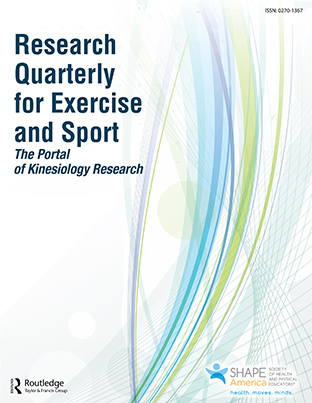 RQES Table of Contents
RQES Table of Contents
Have the Fundamental Movement Skills of U.S. Children Changed?
Zezhao Chen, Weimo Zhub, Dale A. Ulrich, and Man Qin

Purpose: By using four national data sets, this study aimed to examine the changes in U.S. children’s fundamental movement skills (FMS) from 1985 to 2019.
Method: Three Tests Gross of Motor Development (TGMD) normative studies, i.e. TGMD-1 (N = 909, male% = 50), TGMD-2 (N = 1143, male% = 50) and TGMD-3 (N = 864, male% = 51), and the TGMD-2 data of the 2012 NHANES National Youth Fitness Survey (NNYFS-2012; raw N = 352, national represented population = 12,509,706, male% = 51) were used for analyses. Each item in TGMD-2/NNYFS and TGMD-3 was carefully examined, and these that did not match to TGMD-1 were deleted. Cohen’s D effect size (ES) was utilized for the difference among year-to-year comparisons.
Result: From 1985 to 2000, FMS in US children of 3–7 years old (90% increase & 10% no change) increased temporarily, but remained stable (17% increase & 83% no change) among 8–10 years old. Between 2000 and 2019, however, U.S. children began to demonstrate a slight / stable drop in FMS among 3–5 years old (22% decrease & 78% no change), and a distinct decline among 6–10 years old (80% decrease & 20% no change). While children with normal BMI showed the highest FMS score, the direct cause of reduction in FMS is still unknown.
Conclusion: An overall up-and-down change was observed in U.S. children’s FMS between 1985 and 2019, and more longitudinal studies with FMS-related variables are needed.
To read the rest of this article, click here to download a pdf.